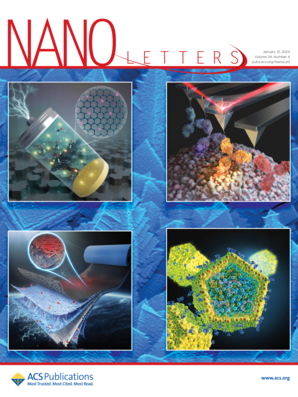Stable Semitransparent All-Polymer Solar Cells with Color-Tunable Reflection and Neutral Transmission
IF 9.6
1区 材料科学
Q1 CHEMISTRY, MULTIDISCIPLINARY
引用次数: 0
Abstract
Enhancing the stability and optical tailorability of semitransparent organic solar cells (ST-OSCs) is crucial for building-integrated photovoltaics. In this work, we propose a smart design for realizing stable and color-tunable all-polymer ST-OSCs through integrating a self-assembled MeO-2PACZ layer capped in conjunction with an optically engineered coupling structure (dielectric layer/metal/dielectric layer). Owing to the effective blocking of interfacial diffusion of metal ions, the devices with MeO-2PACZ receive considerable gains of stability, as manifested by the retention of 90% of the initial efficiency after 4000 h under storage and a retention of 82% after 600 h at maximum power point tracking. The optical coupling layer enables independent modulation of reflective properties while maintaining a high transmittance neutrality. This results in colorful ST-OSCs with a wide reflective chrominance range and a peak light utilization efficiency of 3.62%, among the best for all-polymer ST-OSCs. This strategy advances next-generation, sustainable photovoltaic windows.

求助全文
约1分钟内获得全文
求助全文
来源期刊

Nano Letters
工程技术-材料科学:综合
CiteScore
16.80
自引率
2.80%
发文量
1182
审稿时长
1.4 months
期刊介绍:
Nano Letters serves as a dynamic platform for promptly disseminating original results in fundamental, applied, and emerging research across all facets of nanoscience and nanotechnology. A pivotal criterion for inclusion within Nano Letters is the convergence of at least two different areas or disciplines, ensuring a rich interdisciplinary scope. The journal is dedicated to fostering exploration in diverse areas, including:
- Experimental and theoretical findings on physical, chemical, and biological phenomena at the nanoscale
- Synthesis, characterization, and processing of organic, inorganic, polymer, and hybrid nanomaterials through physical, chemical, and biological methodologies
- Modeling and simulation of synthetic, assembly, and interaction processes
- Realization of integrated nanostructures and nano-engineered devices exhibiting advanced performance
- Applications of nanoscale materials in living and environmental systems
Nano Letters is committed to advancing and showcasing groundbreaking research that intersects various domains, fostering innovation and collaboration in the ever-evolving field of nanoscience and nanotechnology.
 求助内容:
求助内容: 应助结果提醒方式:
应助结果提醒方式:


